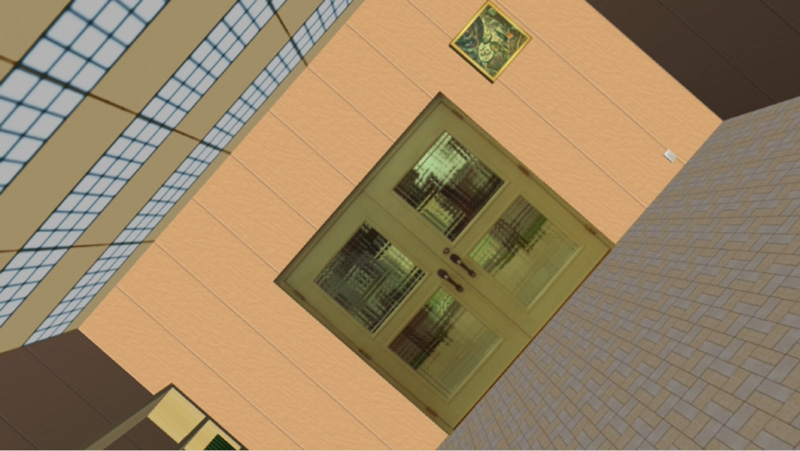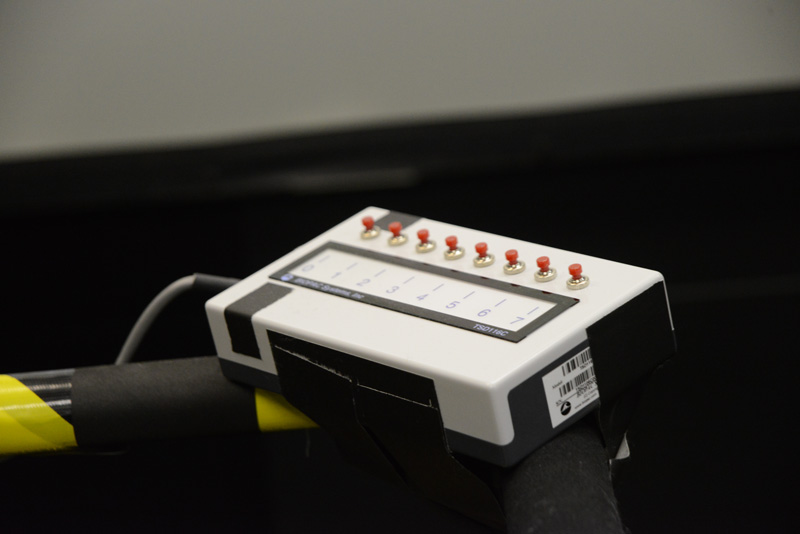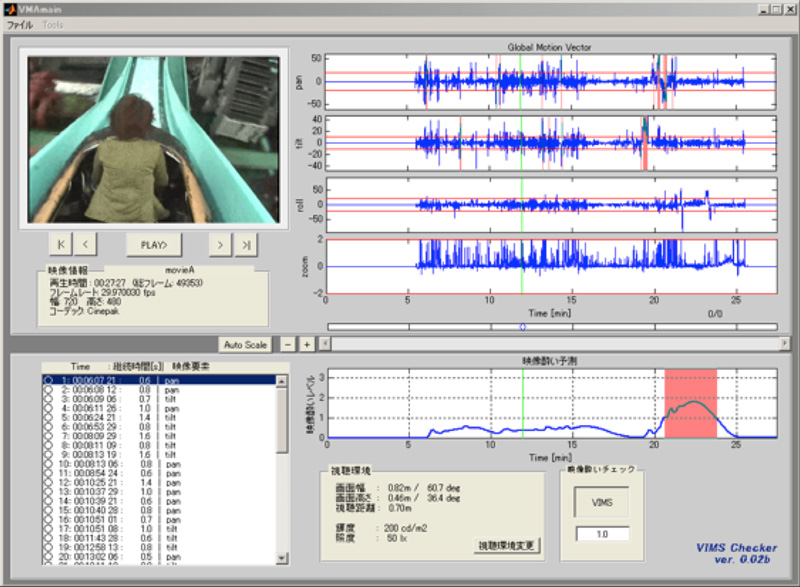Secure Image Safety
to the New Age of Moving Image

Have you experienced ‘visually induced motion sickness’? In Dr. Ujike’s lab, while watching a moving image sitting on a chair, you will first get amazing feelings as if your body is falling off or rolling around, and then, however, you are getting sick, just like car-sickness. Our daily lives are now surrounded by moving images with the cutting edge devices such as larger TV displays, tablets carried around, various types of digital signage in downtown, and recent wearable displays. But did you know there are undesirable biomedical effects caused by moving images?
Dr. Ujike has been trying to establish international standards of ‘Image Safety’ guidelines based on his researches on measuring biomedical effects caused by moving images.
Behavior Information Design Group,
Hiroyasu Ujike, D.Eng.
How the research began
Dr. Ujike’s original research field has been visual psychophysics, and recently, he got interested in the researches on visual image safety. He thinks that moving images that are produced for entertainment or business purposes should not induced visual fatigue, dizziness or sickness in users. The moving images have been increasingly familiar in public spaces such as in streets and stations from the beginning of this century. Accordingly, the researches on image safety have become of increasing importance.
Developing ergonomic guidelines
for image safety
There has been known as undesirable effects, such as photosensitive seizures,
visual fatigue cause by 3D images,
and visually induced motion sickness.
Dr. Ujike and his colleagues have been working on developing ergonomic guidelines for reducing those undesirable effects. Among them, they have also accumulated scientific data on visual fatigue cause by 3D images
and visually induced motion sickness
for the bases of the guidelines.
- Visual fatigue caused by 3D images
Stereoscopic 3D images can produce depth perception by presenting two different images, which have some disparities, separately to left and right eyes. Ergonomic guidelines for reducing visual fatigue caused by 3D images has published in ISO in May, 2015, which is mainly concerning interocular differences and accommodation-convergence mismatch. - Visually induced motion sickness, or VIMS
Have you ever get sick, like motion sickness, when watching dynamic moving images? That is thevisually induced motion sickness,
or VIMS, in which Dr. Ujike currently much involved. There are great individual differences in VIMS, and some people suffer from symptoms for a full day after the onset of the sickness. Moreover, VIMS can be affected by various combination of image factors. Therefore, Dr. Ujike mentioned that it is more important to carefully discuss and develop the guideline.

Clarifying characteristics of VIMS
Dr. Ujike has conducted various experiments on biomedical effects of VIMS, using subjective response box and some sensors attached to observers’ body, to find out the characteristics of VIMS. The severity of VIMS can be changed with visual rotation axes, amplitude, temporal period, and other factors, such parameters of visual motion. Among the parameters, he found velocity of visual rotation can be a main factor.

Developing VIMS evaluating system
How can we reduce the visually induced motion sickness?
Dr. Ujike, collaborating with researchers in some universities, has been developing VIMS evaluating system
based on his finding on basic characteristics of VIMS.
It is a computer program to analyze and evaluate severity of sickness induced by moving images. The prototype system has developed, and the development is still going on to put it into practical use.

To enjoy the age of visual images
The HMD, head-mounted display, currently drawing people’s attention, covers the field of view completely and can move the presented images yoking to users’ head movements, which enables users to feel highly immersed than with traditional screen images.
He is now putting his effort to build the VIMS guideline with his thorough researches for better relationships between images and people in the age of visual images.

 Japanese
Japanese Topic
Topic